What's New
Displaying results 1911 - 1920 of 4052
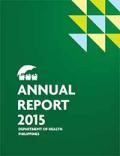
Resource | Publications,
2015 was an exciting year for the public health sector as we continued to develop and implement breakthrough policies to achieve universal health care.
The National Health Insurance Program of the Philippine Health Insurance Corporation (PhilHealth) covered 92 percent of our total population by December 2015. A special milestone for the year was the implementation of the mandatory PhilHealth coverage for senior citizens which benefited 5.4 million Filipino residents 60 years old and above.
The Health Facilities Enhancement Program, with its goal to ensure equitable access to affordable health care, funded 1,828 health facilities nationwide within the year. We provided mobile dental vehicles to local government units and added dentists to our cadre of human resources for health.
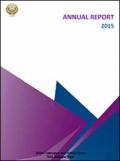
Resource | Publications,
The Annual Report of SAARC TB and HIV/AIDS Centre is being presented indicating the programmes, activities and achievements of the year 2015.
This is the Twentieth consecutive comprehensive Annual Report of the SAARC TB and HIV/AIDS Centre (STAC). This report provides a summary of the activities carried out by the Centre for the year 2015 along with introduction, goals, objectives, vision, mission and achievements of the Centre.
STAC implemented almost all regular activities assigned for the period of January to December 2015.
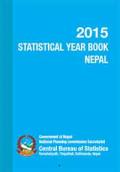
Resource | Publications,
The Statistical Year Book is a biennial publication of the Central Bureau of Statistics. This present edition is fifteenth in the series. Statistical information presented in this edition are compiled from various sources including CBS publications. There are 18 chapters in this edition covering major information on social, demographic and economic situation of the nation. In each chapter, an attempt has been made to update the latest available information on almost all chapters of the book. Likewise, national accounts in the Chapter 15 are updated. Besides, some structural changes have also been made in some chapters of this edition. Considering the demand of users, attempt is made to present data for ten years.

Resource | Publications,
The Ministry of Health is pleased to publish the Annual Health Bulletin 2016; the 29th series in its edition. It presents the status of nation’s health and summary of health data and information on morbidity and mortality, patient case loads, health service coverage, health workforce, health infrastructure, health care cost and demographic statistics.
The health information in is an important national asset and cornerstone of our health system. In Bhutan, the need to have dynamic Health Management and Information System (HMIS) is becoming increasingly important for better planning and effective use of resources in the light of emerging challenges such as epidemiological transition, rising cost of health care, shrinking donor support and shift of focus of development partners on knowledge management. To this end, the ministry has been putting its best effort to strengthen the existing HMIS despite daunting challenges of inadequate ICT infrastructure and connectivity issues in the country.
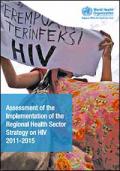
Resource | Publications,
The World Health Organization (WHO) South-East Asia Region is home to a quarter of the world’s population and includes two of the world’s most populous countries: India and Indonesia. The 11 countries that comprise the Region have huge social, economic and physical differences, which account for the wide variations in the HIV epidemics across the Region. The epidemic and the health sector response varies widely among and within Member States. Over 99% of people living with HIV (PLHIV) are in five countries: India, Indonesia, Myanmar, Nepal and Thailand.
The WHO Regional Health Sector Strategy on HIV, 2011–2015 was developed with the overarching aim of assisting Member States to achieve universal access to prevention, diagnosis, treatment and care, which would contribute to the achievement of Millennium Development Goal (MDG) 6 and other health-related goals. The Strategy described the future directions and focus of work for HIV programmes and WHO in the health sector response to the HIV epidemic.
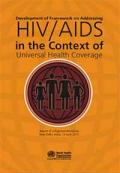
Resource | Publications,
Universal health coverage (UHC) is an aspirational goal that aims for all people to access and use the promotive, preventive, curative, rehabilitative and palliative health services they need that are of sufficient quality and do not cause financial hardship. HIV programmes have, more than any other health programme, served as a trailblazer for UHC at the global and regional levels. They have been characterized by their strong drive in ensuring equity of access to HIV interventions and by their clear focus on the three dimensions that define UHC: providing health services, covering populations and covering costs.
The global HIV response over the past 15 years has been relatively successful: antiretroviral therapy (ART) has been rapidly scaled up; and new HIV infections and AIDS-related deaths have declined. Still, there were an estimated 2.1 million new HIV infections and 1.5 million AIDS-related deaths in 2013. With business as usual approach, these figures are projected to increase in the future. In the post-2015 sustainable development era, there is a need to strengthen and accelerate the HIV response using the UHC agenda to achieve the end of AIDS by 2030.
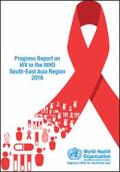
Resource | Publications,
There were an estimated 36.7 million (34.0–39.8) people living with HIV (PLHIV) globally as of December 2015. Annually, there are an estimated 2.1 million (1.8-2.4) new infections 1.1 million (0.94-1.3) AIDS-related deaths. Nearly 17 million people living with HIV (PLHIV) are receiving ART with 46% coverage of those in need of ART.1 Although significant progress in the control of the epidemic has been made, countries must accelerate the prevention of new infections, implement a Treat All strategy, reduce AIDS deaths and eliminate HIV-related stigma and discrimination.
This progress report presents the state of the epidemic and response at regional and country levels with challenges and opportunities that will help Member States, WHO and other key stakeholders identify areas for prioritization and focus to fast-track the HIV response at national and subnational levels to reach 90-90-90 targets of 2020 and pave the way for achieving the SDG target of ending AIDS as a public health threat by 2030.
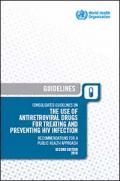
Resource | Guidelines,
These guidelines provide guidance on the diagnosis of human immunodeficiency virus (HIV) infection, the use of antiretroviral (ARV) drugs for treating and preventing HIV infection and the care of people living with HIV. They are structured along the continuum of HIV testing, prevention, treatment and care.
Implementing all the recommendations in these guidelines at the national and global levels will have important implications for programme priority-setting, funding and service delivery. As in 2013, operational guidance is included to help countries as they work to implement new approaches and strengthen the treatment cascade. These guidelines include 10 new recommendations to improve the quality and efficiency of services to people living with HIV. Implementation of the recommendation on universal eligibility for ART will mean that more people will start ART earlier. Importantly, in this guidance WHO emphasizes the need for differentiated approaches to care for people who are stable on ART, such as reducing the frequency of clinic visits and community ART distribution. Such efficiencies are essential if countries with a high burden of HIV infection are to manage their growing numbers of people receiving ART and reduce the burden on people receiving treatment and health facilities.

Resource | Fact Sheets,
This table lists the countries and territories around the world that support harm reduction in policy or practice. Please note that inclusion in this table does not indicate the scope, quality or coverage of services.
It is also important to recognise that the explicit supportive reference to harm reduction in national policy may not necessarily equate to the existence of quality and high coverage services. Furthermore, in many countries harm reduction services, NSP in particular, are NGO-driven and may be operating without government support.

Resource | Presentations,
The world has committed to ending the AIDS epidemic by 2030. How to reach this bold target within the Sustainable Development Goals is the central question facing the United Nations General Assembly High-Level Meeting on Ending AIDS, to be held from 8 to 10 June 2016. The extraordinary accomplishments of the last 15 years have inspired global confidence that this target can be achieved.





